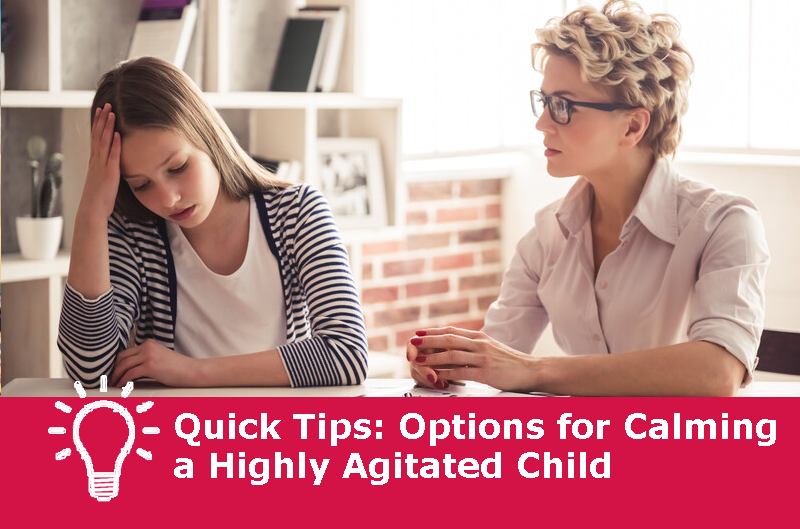An 11-year-old boy, who was admitted for suicidal ideation, is angry and wants to go home. He is marching up and down the hallways, screaming and flailing his arms in a menacing manner. You realize that medication to sedate him might be necessary, but you’re also considering a behavioral intervention.
How do you handle either approach? Here are some strategies for both behavioral interventions and sedation, which were pulled from an article in The Carlat Child Psychiatry Report:
Behavioral interventions
When conducting a behavioral intervention to calm an agitated child, consider using some of the following tactics:
Pharmacologic Management
Should a behavioral intervention not work, or not be in the best interest of safety, try to get the patient to voluntarily take medication. Getting agitated kids to agree to a sedative is often not difficult, but it requires skill in the art of communicating. Here are some techniques you can try:
Finally, while using medications might be necessary, only use physical restraints as a last option. According to one study, children–especially those with histories of abuse and neglect–perceive restraints as punitive, potentially leading to further mistrust of mental health providers (General Accounting Office, 1999). Also, physical restraints, as we all know, are the least safe and least compassionate way to handle the situation.
Subscribers to The Carlat Child Psychiatry Report, can read the full article here.
How do you handle either approach? Here are some strategies for both behavioral interventions and sedation, which were pulled from an article in The Carlat Child Psychiatry Report:
Behavioral interventions
When conducting a behavioral intervention to calm an agitated child, consider using some of the following tactics:
-
Guide the child away from the trigger. Put space between the patient and people or circumstances that may be causing aggravation, such as parents or siblings, hospital staff, or loud media.
Food is often helpful. Offer food or perhaps treats, which help reduce the child’s sense of alarm, serve as a distraction, and helps build trust. - If available, offer to play a sport or game. A game of foosball, ping pong, or basketball can help dissipate the child’s negative energy.
- Consider using media as a distraction. Watching TV, playing a video game, or listening to music can be helpful in soothing the cycle of agitation.
- Calmly ask the child if he will sit or lie down in a quiet place. If it helps, offer to stay with the child.
Pharmacologic Management
Should a behavioral intervention not work, or not be in the best interest of safety, try to get the patient to voluntarily take medication. Getting agitated kids to agree to a sedative is often not difficult, but it requires skill in the art of communicating. Here are some techniques you can try:
- Normalize the situation by communicating an understanding of their reaction. For instance, tell the child, “I understand that being in a hospital can make you pretty stressed out. A lot of kids I’ve seen who get this stressed tell me they feel a lot better after taking a medicine.”
- Give them a sense of control by framing the suggestion as a question: “What would you like to do to calm down? Can I give you something that will help?”
- Give them some choices—usually just two is enough: “I can see you’re pretty keyed up now. I have two suggestions: either rest on the couch and cool down, or take this medication. Which one would you like to choose?”
Finally, while using medications might be necessary, only use physical restraints as a last option. According to one study, children–especially those with histories of abuse and neglect–perceive restraints as punitive, potentially leading to further mistrust of mental health providers (General Accounting Office, 1999). Also, physical restraints, as we all know, are the least safe and least compassionate way to handle the situation.
Subscribers to The Carlat Child Psychiatry Report, can read the full article here.


_-The-Breakthrough-Antipsychotic-That-Could-Change-Everything.jpg?1729528747)



